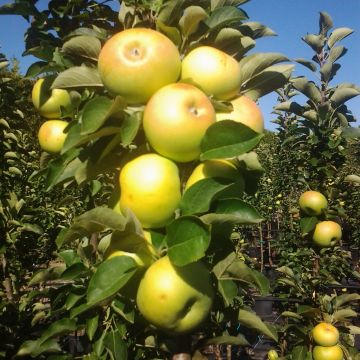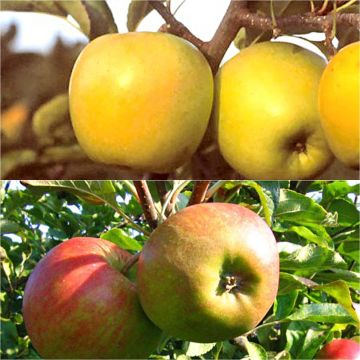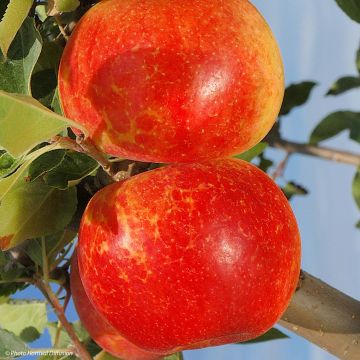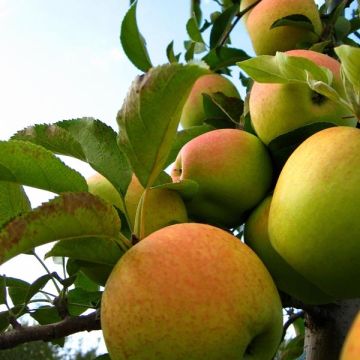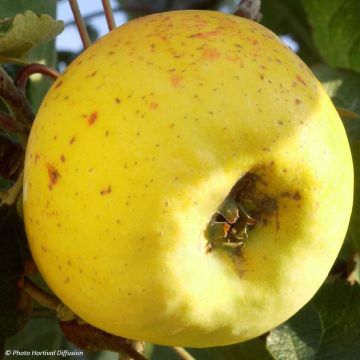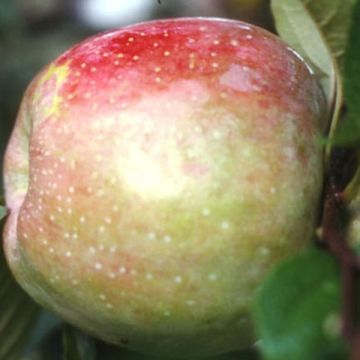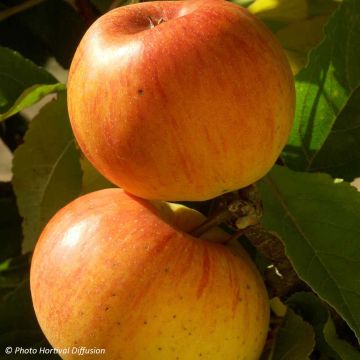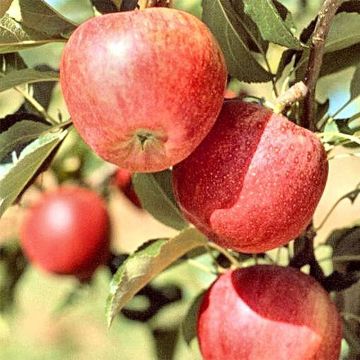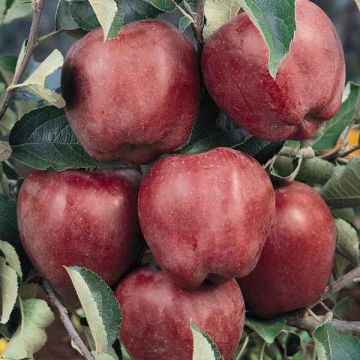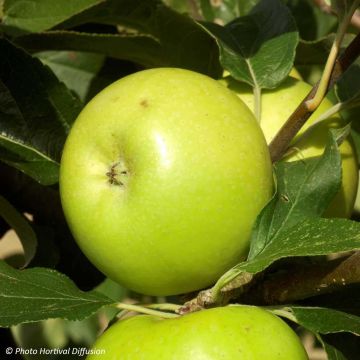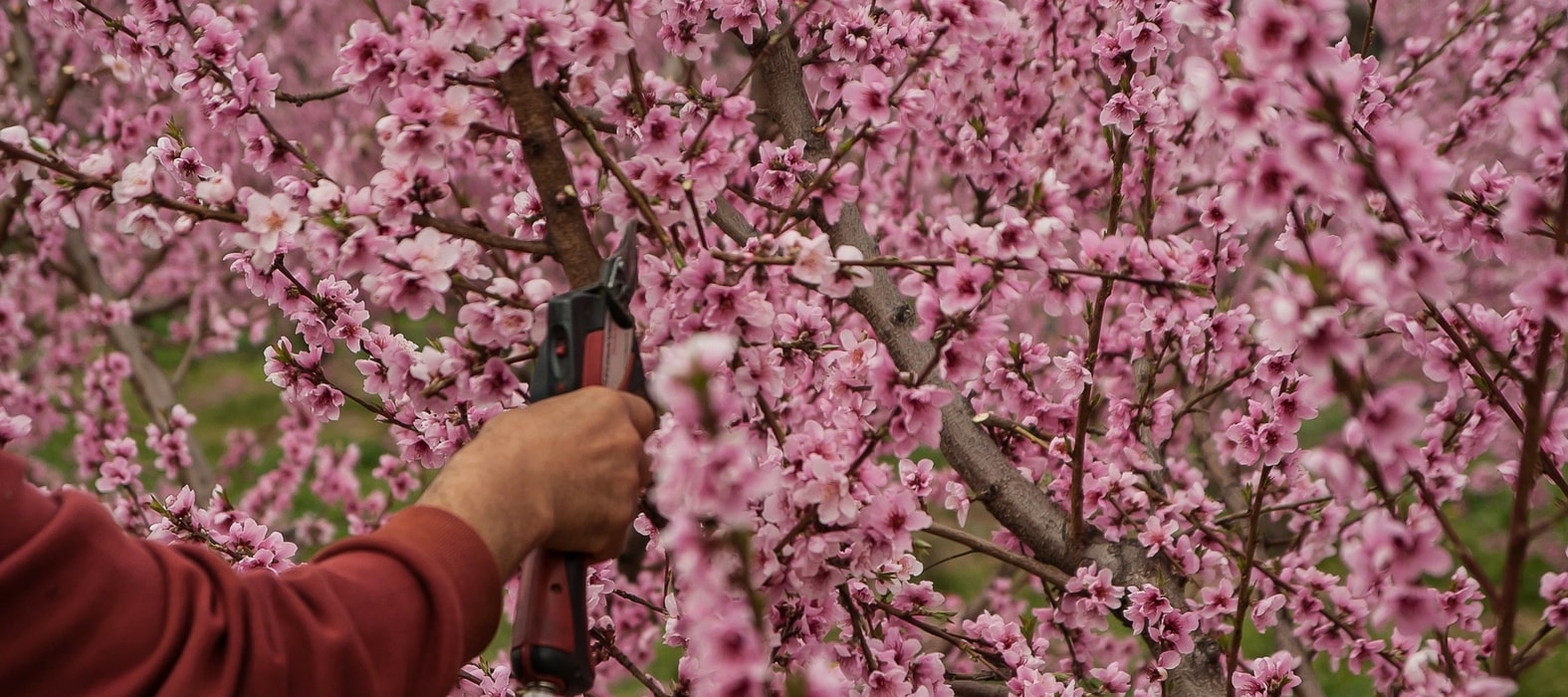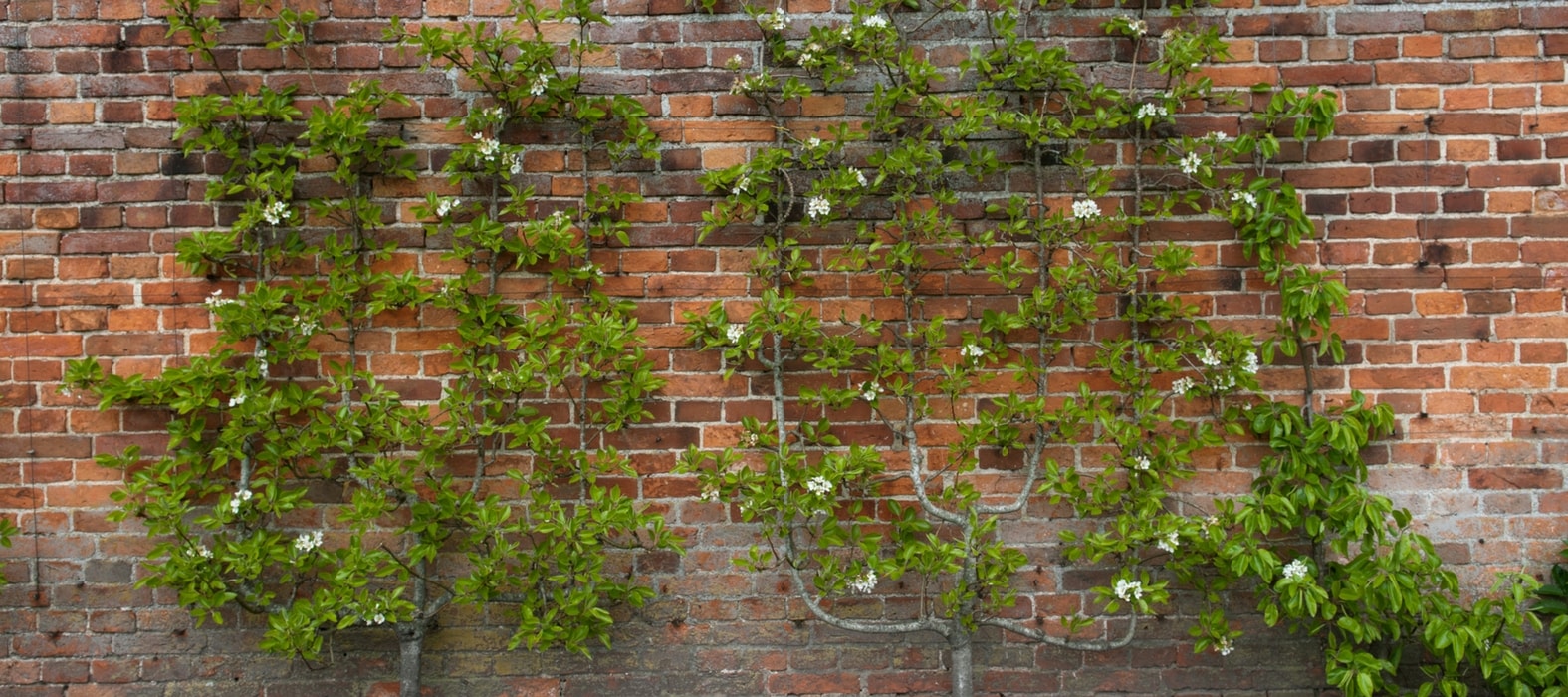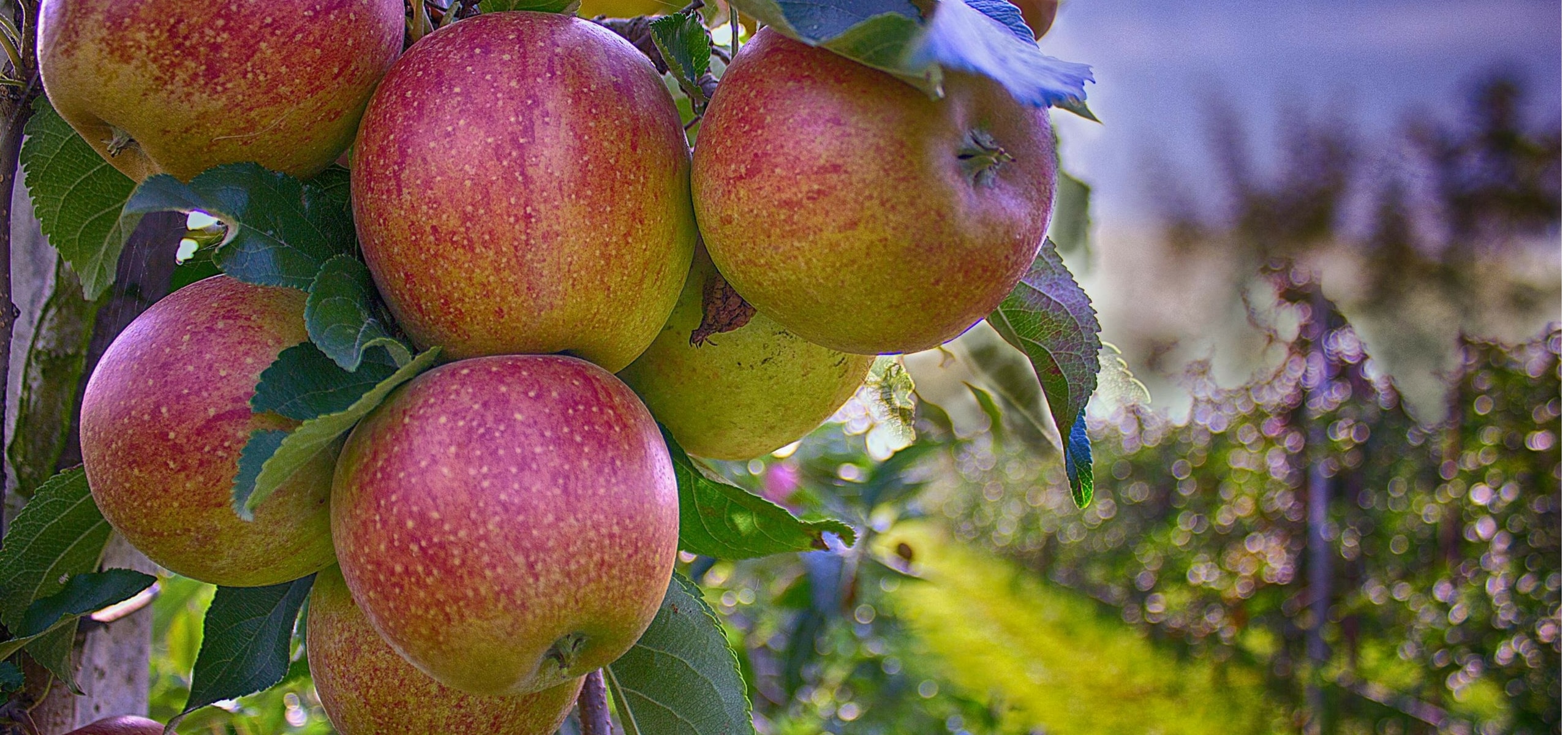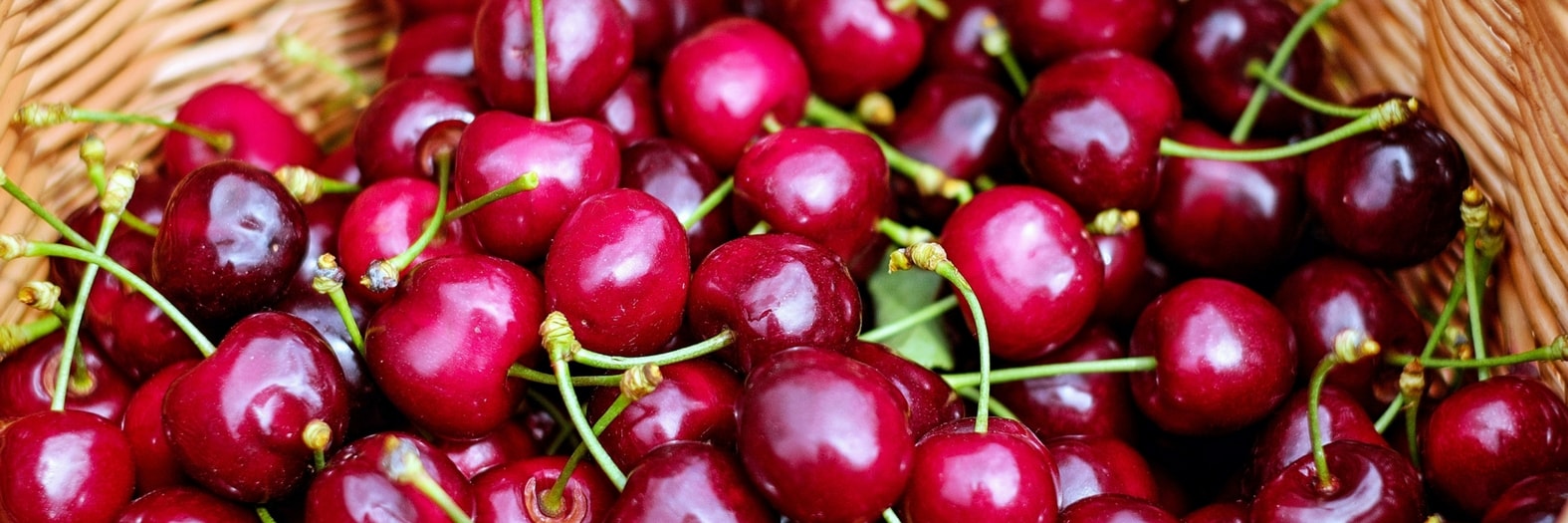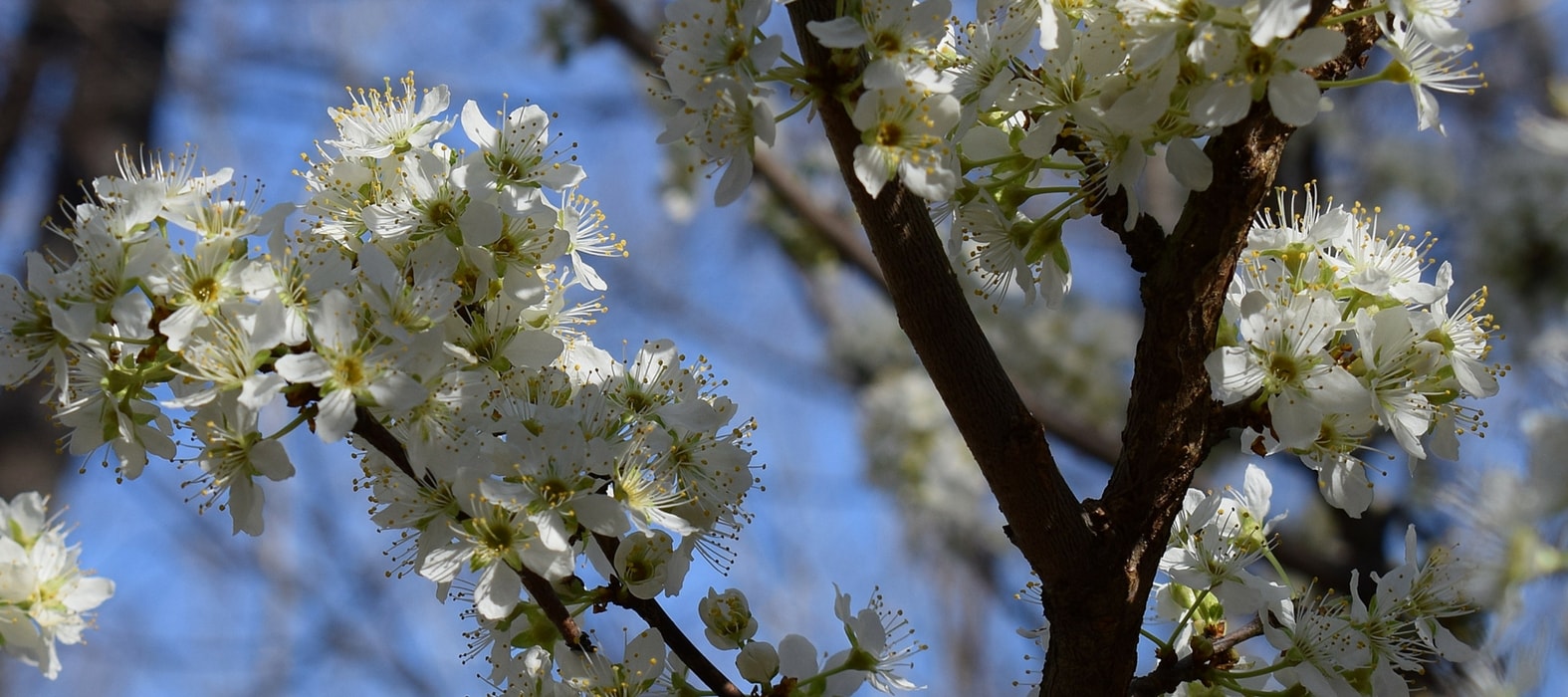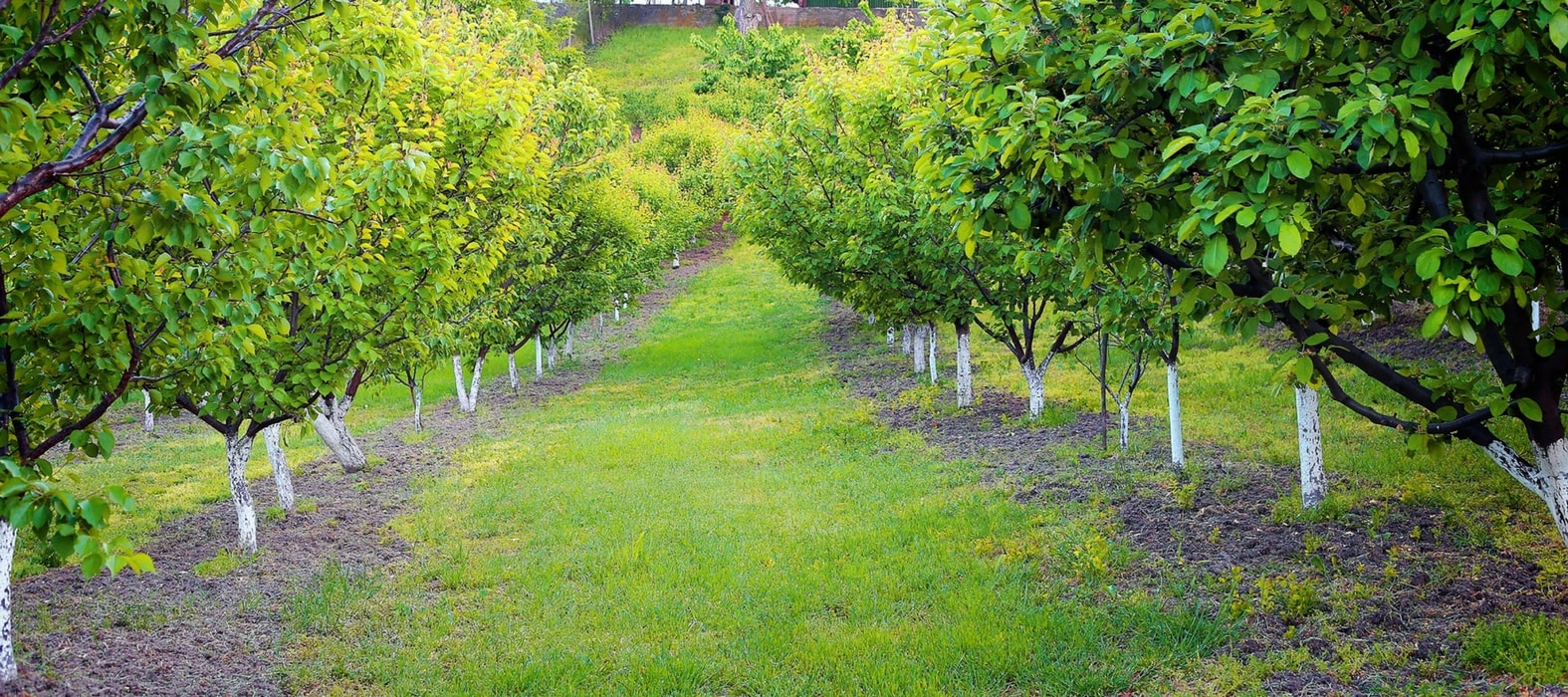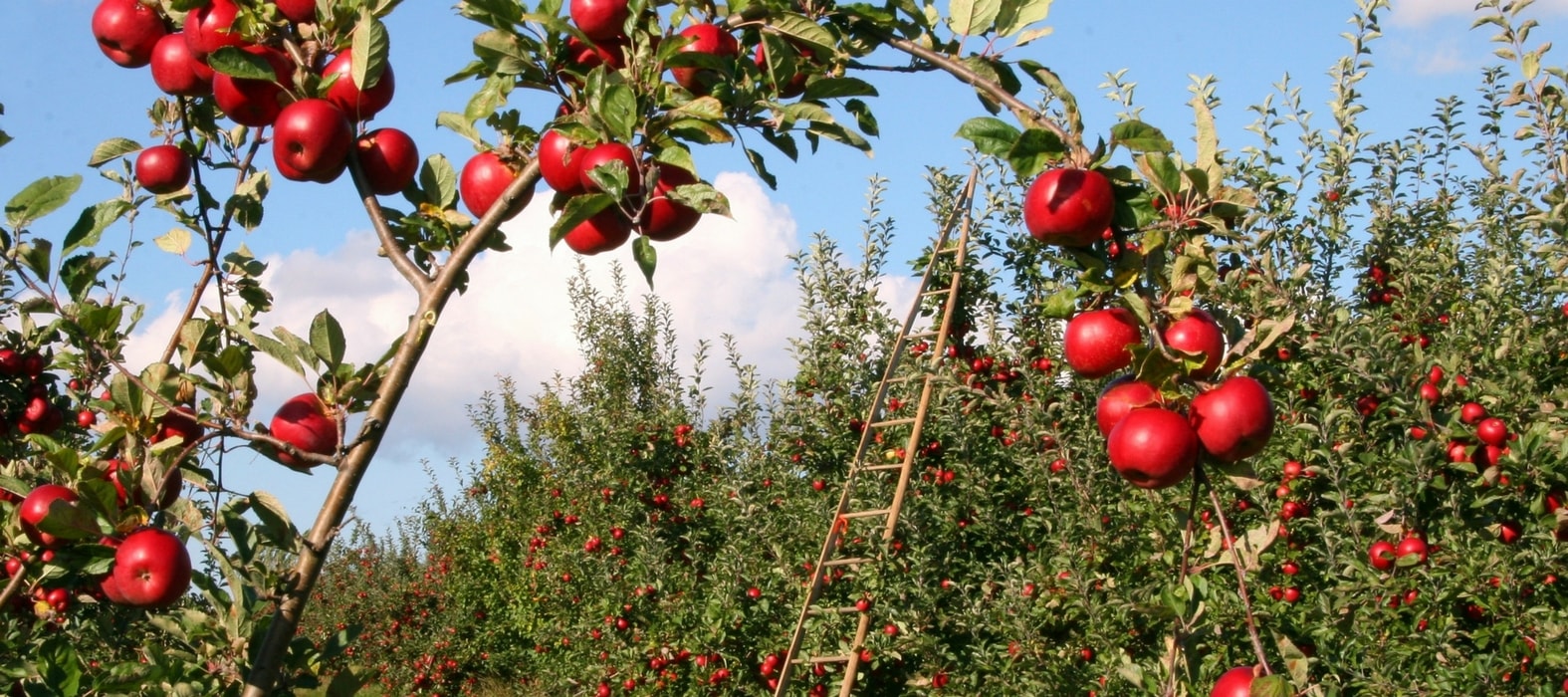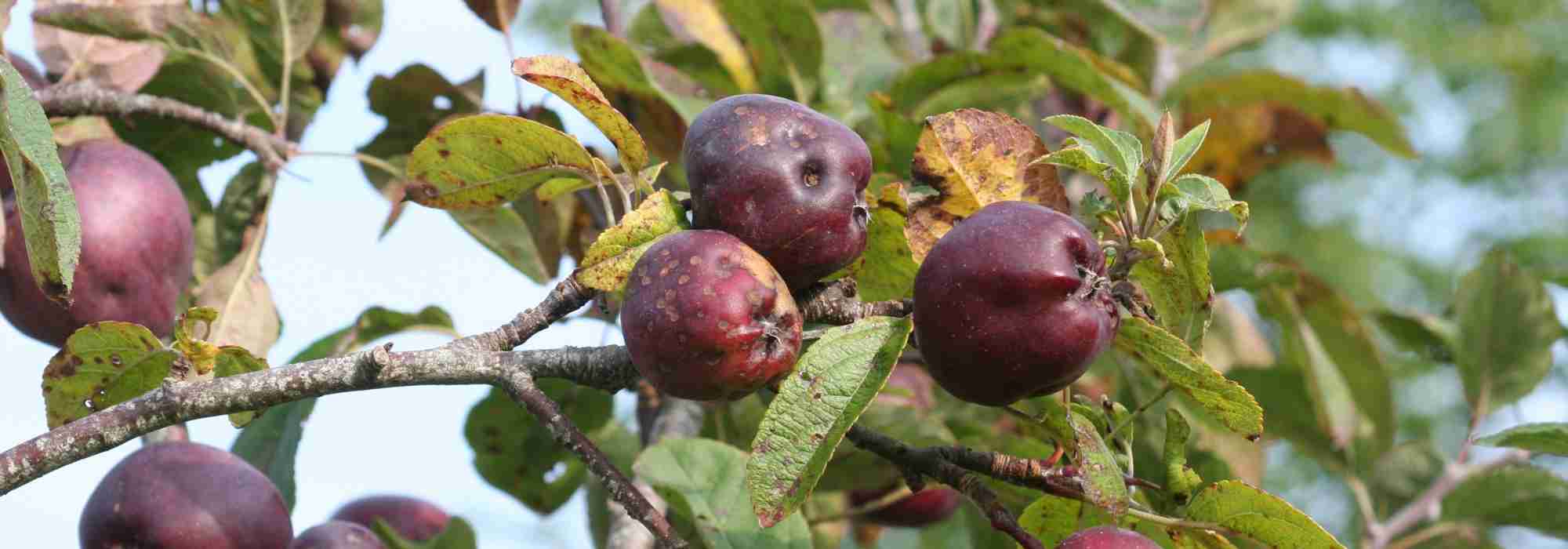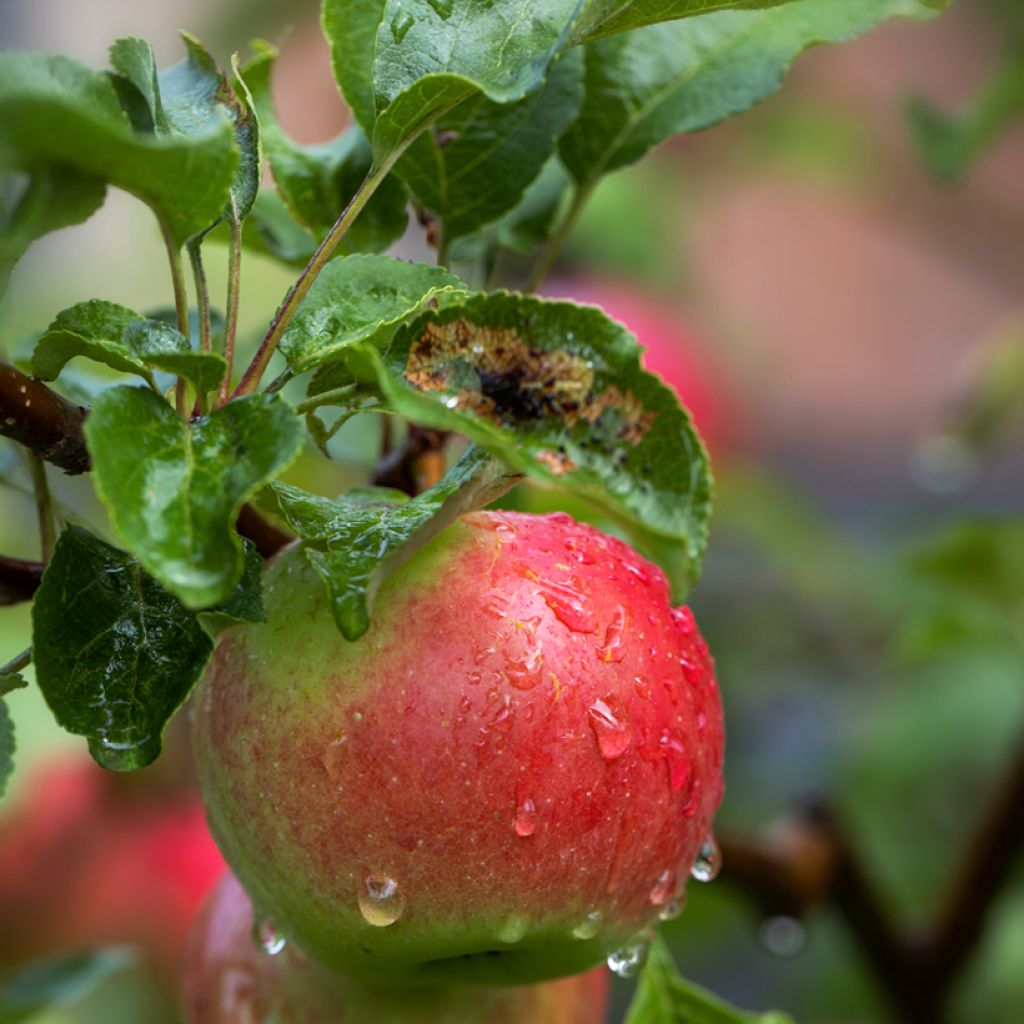

Apple Tree Charłamowskie - Malus domestica
Apple Tree Charłamowskie - Malus domestica
Malus domestica Charłamowskie
Apple
Special offer!
Receive a €20 voucher for any order over €90 (excluding delivery costs, credit notes, and plastic-free options)!
1- Add your favorite plants to your cart.
2- Once you have reached €90, confirm your order (you can even choose the delivery date!).
3- As soon as your order is shipped, you will receive an email containing your voucher code, valid for 3 months (90 days).
Your voucher is unique and can only be used once, for any order with a minimum value of €20, excluding delivery costs.
Can be combined with other current offers, non-divisible and non-refundable.
Home or relay delivery (depending on size and destination)
Schedule delivery date,
and select date in basket
This plant carries a 6 months recovery warranty
More information
We guarantee the quality of our plants for a full growing cycle, and will replace at our expense any plant that fails to recover under normal climatic and planting conditions.
Description
The 'Charłamowskie' Apple Tree is a very old Russian variety, present in Europe for two centuries. The tree has an upright habit and can reach 6m in height, becoming productive fairly quickly. An early variety, its beautiful April blossom produces fruit that can ripen as early as the end of July. The medium-sized apples have a shiny, smooth epidermis with an intimate blend of yellow and red. The white flesh is tender and tangy, moderately juicy. Ideal as an eating apple, it also works well for preserves. In all cases, the fruit should be eaten promptly as it quickly becomes farinose. Plant another apple tree nearby to improve pollination.
The Apple Tree is an important member of the vast family Rosaceae, which hosts most of our other fruit-bearing genera (Peach Trees, Pear Trees, Raspberry Plants...). The genus Malus includes around forty species, including the Common Apple Tree, Malus domestica (synonyms, Malus communis or Malus pumila), as well as non-fruiting species like Ornamental Crabapples. The fruiting Apple Tree was already prized by the Romans who knew of at least 29 different varieties, whereas today, the number of existing varieties is estimated at around 20,000.
The Malus domestica 'Charłamowskie' is a Russian variety that appeared in around 1700 and has since spread across Europe and North America. Popular in the orchards of the northern former Soviet Union in the 20th century, it is known by various synonyms such as Charłamówka, Borowinka, Sierpniówka, Duchess of Oldenburg or Borovitsky. The tree has very vigorous initial growth with an upright habit, then its growing speed slows and it forms a somewhat loose, spherical crown made up of numerous branches that tend to break in the wind. It begins fruiting quite young, producing an abundant to moderately abundant harvest, and sometimes shows a tendency towards biennial bearing. Thus, a year of heavy production may be followed by a leaner year, as the tree recovers from its efforts (fruiting is the most energy-demanding process for plants, even more so than flowering).
In April or even May, the Apple Tree produces a very pretty pinkish-white blossom consisting of small single flowers grouped in clusters. Various pollinating varieties to plant nearby are suitable, such as the 'Jonathan', 'Kronselska', 'Inflancka', 'Idared', 'Fameuse', 'Astrakan Rouge', 'Wagener', 'Winter Banana' or 'Winter Pearmain'. Once pollinated, the flowers will develop into medium-sized, slightly flat fruit. The smooth skin is a shiny greenish-yellow, developing a striped carmine-red blush. The yellowish-white flesh is both delicate and crunchy, juicy and aromatic. Typically ripening in August, these apples should be eaten very quickly either raw or used for preserves as they cannot be stored beyond September.
The 'Charłamowskie' Apple Tree will appeal to enthusiasts of old and unusual varieties. Its poor storage qualities may deter those accustomed to easier varieties. It will find its place in an orchard alongside other heritage varieties such as the famous 'Conference' Pear Tree whose fruit is beloved by gourmets and lends itself to all uses: jams, compotes, pastries, and eaten raw. To enjoy delicious fruit earlier in the season, consider the 'Amsden' Peach Tree whose origins date back over a hundred years, which will delight you with its tangy, juicy, white flesh fruit.
Plant habit
Fruit
Flowering
Foliage
Botanical data
Malus
domestica
Charłamowskie
Rosaceae
Apple
Malus domestica Charłamówka, Borowinka, Sierpniówka, Duchess of Oldenburg, Borovitsky
Cultivar or hybrid
Other Apple trees
View all →Planting and care
Choose a sunny spot for your 'Charłamowskie' Apple Tree. The soil can be slightly chalky or acidic, but not excessively so. This hardy variety can be planted in lower mountainous areas up to 700-800 metres in altitude without risk. Dig a wide planting hole at least three times the volume of the root ball. Add organic matter (compost, potting soil, etc.) and a base fertiliser such as crushed horn at the same time. Do not bury the graft junction. Stake if necessary. For apple trees planted in isolation and exposed to wind, it may be useful to stake them by setting up a guy-wire system: plant three stakes in a triangle 50 cm around the trunk, join them with pieces of wood. Protect the bark with a piece of rubber, for example, and attach the stakes to the trunk with metal wires. Water generously, even in winter, even if it rains. Fruit trees are ideally planted between October and March, outside of frost periods. Container-grown plants can be planted all year round, except during periods of extreme heat or frost.
In winter, you can add a small spadeful of wood ash rich in potash at the base of the tree and lightly incorporate this into the surface of the soil to improve fruiting. Apple trees can be susceptible to various diseases and pests. To minimise risks, space trees sufficiently, plant multi-species hedges, and set up nesting boxes or insect shelters to attract beneficial wildlife. In short: prioritise diversity. The main diseases affecting apple trees are scab (brown spots on the leaves), brown rot (withering of flowers and fruit rot on the tree), and powdery mildew (white felting on the leaves). For these three cases, preventive action is preferable by spraying a horsetail decoction; as a last resort and in cases of severe infestations, a curative treatment with a Bordeaux mixture can be applied. 'Charłamowskie' is not very susceptible to powdery mildew but is fairly prone to scab and canker, especially in water-retentive soils.
As for pests, the codling moth (or fruit worm) is a small caterpillar, hatched from a moth's eggs, which burrows into the fruit. To combat this, it is best to act preventively by encouraging the presence of tits and bats by placing nesting boxes. In case of aphid infestations you can spray a solution based on tar soap.
Harvest the fruit regularly at ripeness in August (or even from late July) to prevent it from rotting on the tree. These apples should be eaten quickly or preserved as they can only be stored until September at most and quickly become farinose.
Planting period
Intended location
Care
Planting & care advice
This item has not been reviewed yet - be the first to leave a review about it.
Haven't found what you were looking for?
Hardiness is the lowest winter temperature a plant can endure without suffering serious damage or even dying. However, hardiness is affected by location (a sheltered area, such as a patio), protection (winter cover) and soil type (hardiness is improved by well-drained soil).

Photo Sharing Terms & Conditions
In order to encourage gardeners to interact and share their experiences, Promesse de fleurs offers various media enabling content to be uploaded onto its Site - in particular via the ‘Photo sharing’ module.
The User agrees to refrain from:
- Posting any content that is illegal, prejudicial, insulting, racist, inciteful to hatred, revisionist, contrary to public decency, that infringes on privacy or on the privacy rights of third parties, in particular the publicity rights of persons and goods, intellectual property rights, or the right to privacy.
- Submitting content on behalf of a third party;
- Impersonate the identity of a third party and/or publish any personal information about a third party;
In general, the User undertakes to refrain from any unethical behaviour.
All Content (in particular text, comments, files, images, photos, videos, creative works, etc.), which may be subject to property or intellectual property rights, image or other private rights, shall remain the property of the User, subject to the limited rights granted by the terms of the licence granted by Promesse de fleurs as stated below. Users are at liberty to publish or not to publish such Content on the Site, notably via the ‘Photo Sharing’ facility, and accept that this Content shall be made public and freely accessible, notably on the Internet.
Users further acknowledge, undertake to have ,and guarantee that they hold all necessary rights and permissions to publish such material on the Site, in particular with regard to the legislation in force pertaining to any privacy, property, intellectual property, image, or contractual rights, or rights of any other nature. By publishing such Content on the Site, Users acknowledge accepting full liability as publishers of the Content within the meaning of the law, and grant Promesse de fleurs, free of charge, an inclusive, worldwide licence for the said Content for the entire duration of its publication, including all reproduction, representation, up/downloading, displaying, performing, transmission, and storage rights.
Users also grant permission for their name to be linked to the Content and accept that this link may not always be made available.
By engaging in posting material, Users consent to their Content becoming automatically accessible on the Internet, in particular on other sites and/or blogs and/or web pages of the Promesse de fleurs site, including in particular social pages and the Promesse de fleurs catalogue.
Users may secure the removal of entrusted content free of charge by issuing a simple request via our contact form.
The flowering period indicated on our website applies to countries and regions located in USDA zone 8 (France, the United Kingdom, Ireland, the Netherlands, etc.)
It will vary according to where you live:
- In zones 9 to 10 (Italy, Spain, Greece, etc.), flowering will occur about 2 to 4 weeks earlier.
- In zones 6 to 7 (Germany, Poland, Slovenia, and lower mountainous regions), flowering will be delayed by 2 to 3 weeks.
- In zone 5 (Central Europe, Scandinavia), blooming will be delayed by 3 to 5 weeks.
In temperate climates, pruning of spring-flowering shrubs (forsythia, spireas, etc.) should be done just after flowering.
Pruning of summer-flowering shrubs (Indian Lilac, Perovskia, etc.) can be done in winter or spring.
In cold regions as well as with frost-sensitive plants, avoid pruning too early when severe frosts may still occur.
The planting period indicated on our website applies to countries and regions located in USDA zone 8 (France, United Kingdom, Ireland, Netherlands).
It will vary according to where you live:
- In Mediterranean zones (Marseille, Madrid, Milan, etc.), autumn and winter are the best planting periods.
- In continental zones (Strasbourg, Munich, Vienna, etc.), delay planting by 2 to 3 weeks in spring and bring it forward by 2 to 4 weeks in autumn.
- In mountainous regions (the Alps, Pyrenees, Carpathians, etc.), it is best to plant in late spring (May-June) or late summer (August-September).
The harvesting period indicated on our website applies to countries and regions in USDA zone 8 (France, England, Ireland, the Netherlands).
In colder areas (Scandinavia, Poland, Austria...) fruit and vegetable harvests are likely to be delayed by 3-4 weeks.
In warmer areas (Italy, Spain, Greece, etc.), harvesting will probably take place earlier, depending on weather conditions.
The sowing periods indicated on our website apply to countries and regions within USDA Zone 8 (France, UK, Ireland, Netherlands).
In colder areas (Scandinavia, Poland, Austria...), delay any outdoor sowing by 3-4 weeks, or sow under glass.
In warmer climes (Italy, Spain, Greece, etc.), bring outdoor sowing forward by a few weeks.































